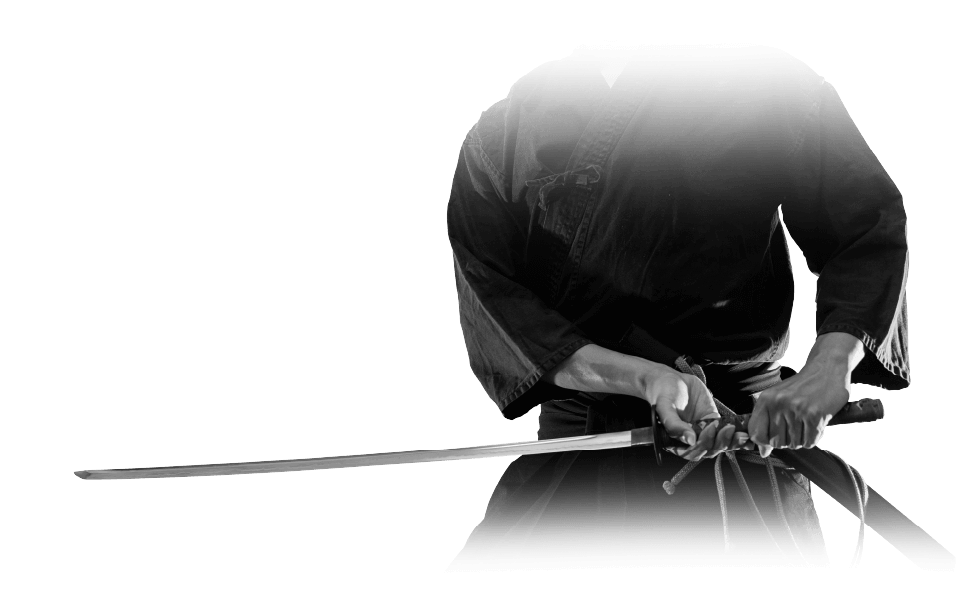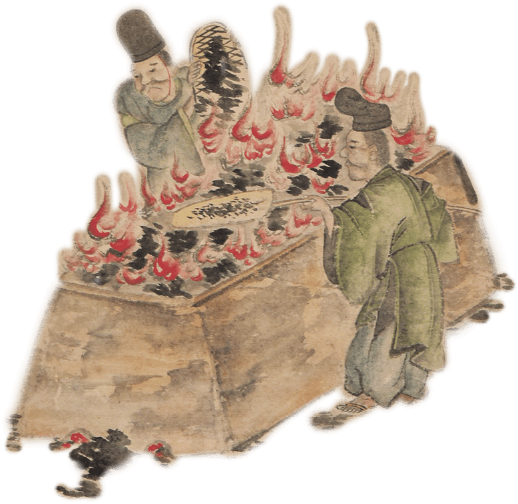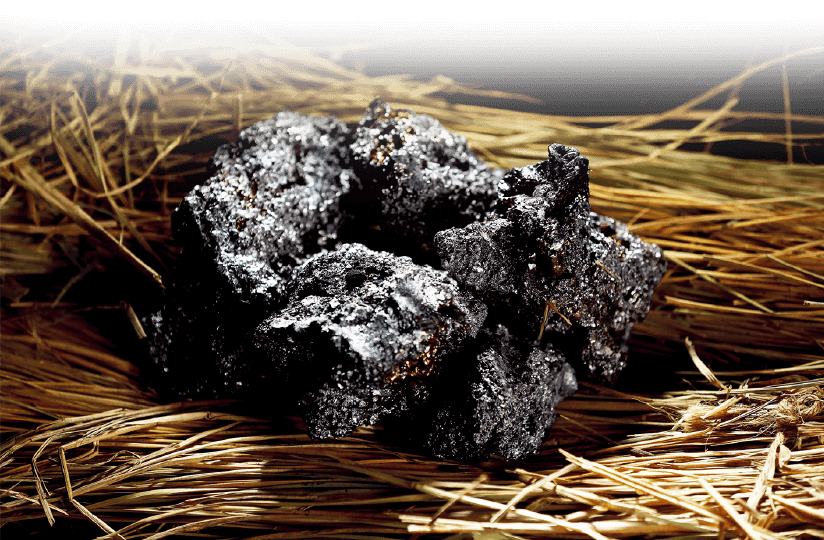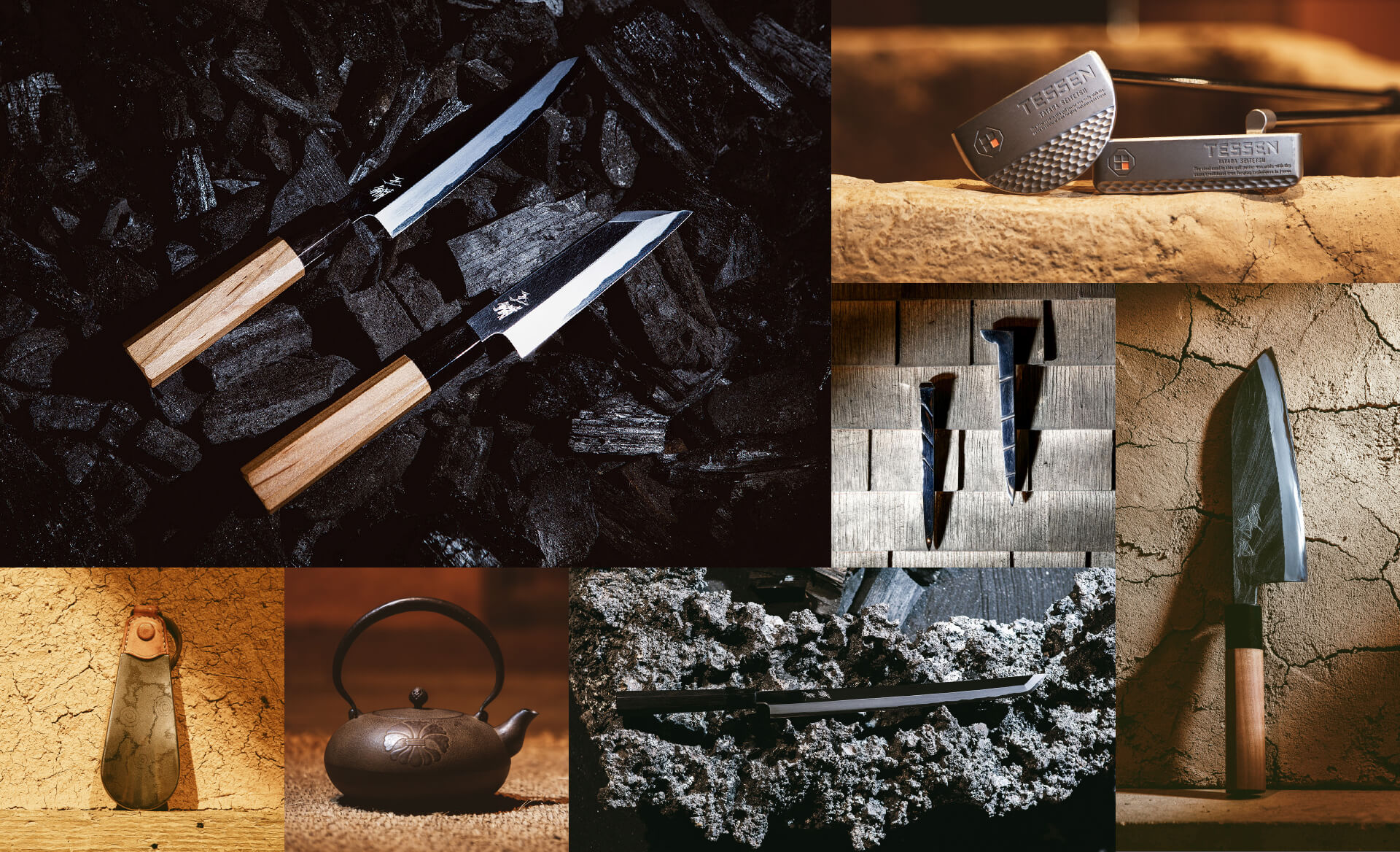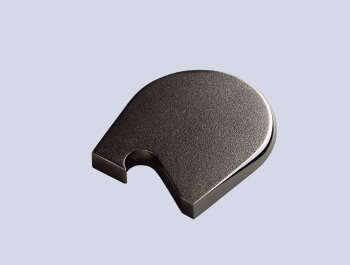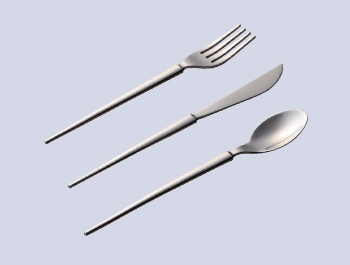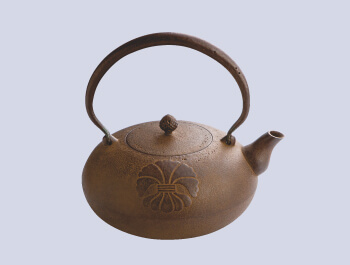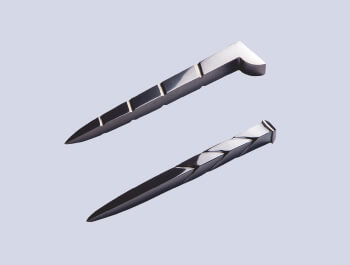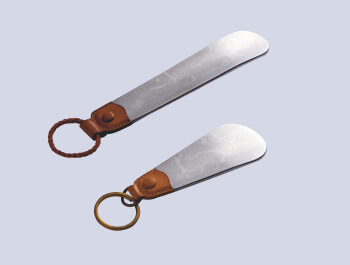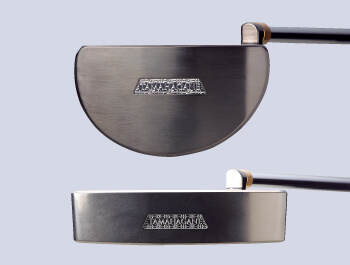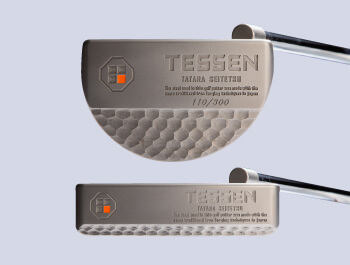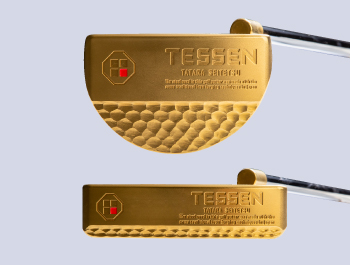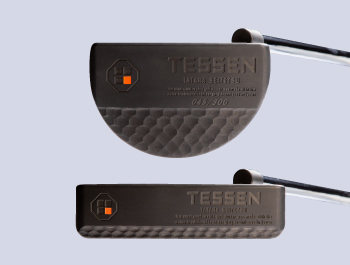KNIFE
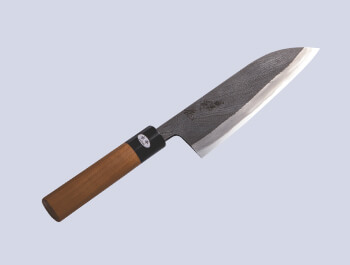
-
Tamahagane Warikomi Santoku Knife
This double-edged knife is made from “Tamahagane”, a material used for swords, forged by Kobayashi Shunji, a swordsmith from Okuizumo, and finished with the skilled techniques of Hinoura Tsukasa, a traditional craftsman from Sanjo City, Niigata Prefecture.
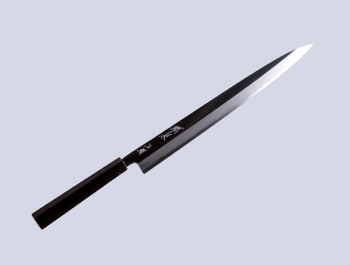
-
Yanagiba Knife
The blade material “Tamahagane” used for the Japanese swords is forged by the swordsmith "Shunji Kobayashi" from Okuizumo and processed by dentoukougeishi master smith Yoshikazu Tanaka in Sakai City, Osaka Prefecture, a famous cutlery production area.

-
Sakimaru Yanagiba Knife
This is a single-edged yanagiba knife, known in the Kanto region as "sakimaru takohiki".
The knife, which is made through the same process as a sword, looks like a traditional Japanese sword.
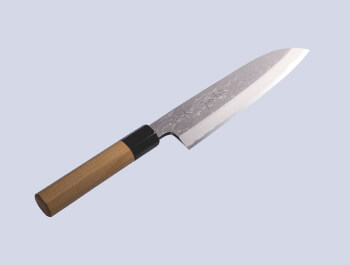
-
Suminagashi Santoku Knife
This single-edged knife uses the sword material "Tamahagane" for the tip of the knife.
The base metal is made of multi-layered steel, also known as Damascus steel, and features a unique pattern called “suminagashi”.
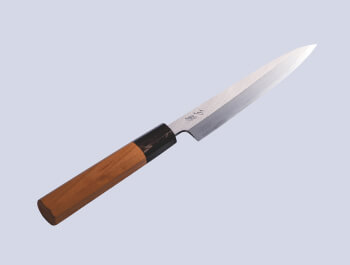
-
Petty Knife
This petty knife uses "Tamahagane", a material used in swords, for the tip of the knife.
It is a versatile, small Western-style knife that can be used for in the average household every day.






